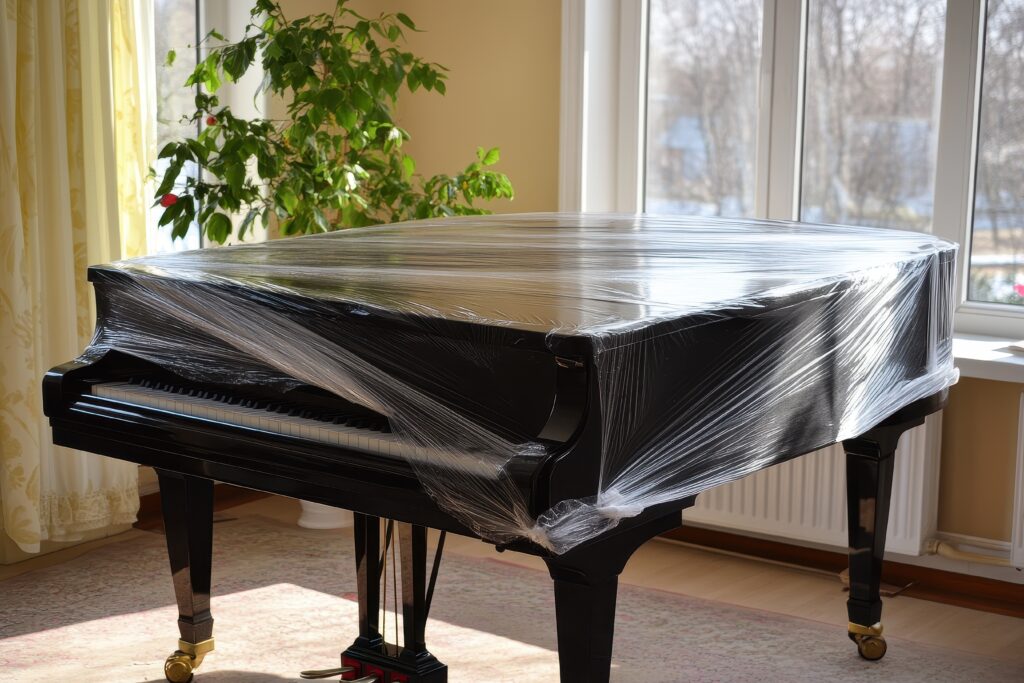
Moving a piano is not like moving standard furniture—it requires specialized skills, equipment, and expertise. Whether relocating across town or to a new state, hiring professional Denver piano movers ensures a smooth and damage-free experience. However, many piano owners wonder about the cost of hiring expert movers and what factors influence pricing. From distance and weight to additional fees for stairs or storage, understanding these elements can help budget accordingly. This guide explores the costs associated with hiring professional piano movers, comparing DIY options and professional services to help make an informed decision.
Factors That Affect Pricing – Distance, Weight, Difficulty of Move
1. Distance of the Move
One of the biggest factors in determining the cost of professional piano moving services is the distance of the relocation. A short, local move within the same city will cost significantly less than a long-distance or interstate move. Movers typically charge by mileage, with longer moves requiring specialized transportation arrangements to ensure the piano’s safety during transit.
2. Weight and Size of the Piano
Pianos vary greatly in size, from small uprights to grand pianos that weigh over 1,200 pounds. Larger, heavier pianos require more manpower and specialized equipment, increasing the overall cost of moving. The more complex the piano, the more careful handling is needed to prevent damage, which is reflected in the pricing.
3. Complexity of the Move
The difficulty of the move also plays a crucial role in pricing. Factors such as narrow hallways, tight corners, multiple flights of stairs, or the need for a crane lift can all increase the cost. If the piano must be maneuvered through a challenging layout or transported to a high-rise apartment, additional labor and specialized equipment will be required.
Local Vs. Long-Distance Moves – How Pricing Changes Based on Distance
1. Local Moves
For local moves within the same city or metropolitan area, moving companies often charge a flat rate or an hourly fee. The cost generally ranges from $200 to $600, depending on factors such as piano size, ease of access, and the number of movers required. Short-distance moves are typically completed within a few hours, making them more affordable than long-distance relocations.
2. Long-Distance Moves
Moving a piano across state lines or to another city is significantly more expensive due to fuel costs, extended labor hours, and specialized transport requirements. Prices can range from $500 to $2,500 or more, depending on the distance and level of service needed. Professional movers use climate-controlled trucks and secure packing methods to prevent damage over long distances. Did you know that an insurance policy is also available for piano moving? Read “The Importance Of Piano Moving Insurance.”
3. Special Considerations for Cross-Country Moves
If moving a piano cross-country, additional precautions must be taken to protect it from temperature fluctuations and road vibrations. Some moving companies offer custom crating and insurance options to cover potential damages, which may add to the final cost.
Additional Fees – Stairs, Tight Spaces, Storage Needs, or Last-Minute Bookings
1. Stairs and Elevators
Moving a piano up or down multiple flights of stairs adds to the difficulty of the move and increases the labor costs. Some companies charge an extra fee per staircase or per step, which can range from $50 to $200, depending on the complexity of the job. If an elevator is available, movers may still charge an additional fee for maneuvering the piano safely.
2. Tight Spaces and Obstacles
If a piano must be moved through narrow hallways, sharp corners, or small doorways, movers may need to disassemble certain parts of the instrument to fit through the space. This can result in additional labor fees, especially if reassembly and tuning are required after the move.
3. Storage Costs
If a piano cannot be immediately placed in its new location, professional movers may offer temporary storage services. Climate-controlled storage can range from $50 to $200 per month, depending on the level of protection and security provided. Storing a piano improperly in a non-climate-controlled environment can lead to warping, tuning issues, and damage to the instrument’s structure.
4. Urgent or Last-Minute Moving Fees
Booking a piano move at the last minute or requiring same-day service may incur extra charges. Many moving companies offer discounts for scheduling in advance, while last-minute requests often come with premium pricing due to limited availability and rushed logistics.
Comparing DIY Costs Vs. Professional Services – Why Hiring Experts May Save Money
1. Equipment and Manpower Costs
Moving a piano without professional help requires renting specialized equipment such as dollies, straps, moving blankets, and even a truck with a lift gate. These costs add up quickly, especially if multiple people are needed to assist with the move. Additionally, the risk of injury or property damage increases without expert knowledge of proper lifting techniques.
2. Potential for Damage
Pianos are extremely fragile, and improper handling can result in costly repairs. A damaged soundboard, broken strings, or a cracked leg can cost hundreds or even thousands of dollars to fix. Professional movers are trained to transport pianos safely, reducing the risk of damage and unexpected repair costs.
3. Insurance Coverage
Reputable piano moving companies offer insurance coverage, protecting against accidental damage during the move. In contrast, a DIY move leaves the owner responsible for any damage, making professional movers a more secure and cost-effective option in the long run.
Getting a Quote – What Information to Provide to Get an Accurate Estimate
1. Piano Type and Size
When requesting a quote, providing details about the piano’s size and type is essential. Movers need to know whether they are dealing with a spinet, upright, baby grand, or full concert grand piano to determine the appropriate equipment and manpower needed.
2. Pick-Up and Delivery Locations
The locations of both the pick-up and drop-off points influence pricing. Providing exact addresses allows movers to assess potential challenges such as stairs, narrow hallways, or long carrying distances.
3. Any Special Requirements
If storage, climate control, or disassembly is needed, these factors should be discussed upfront. Being transparent about any obstacles, such as staircases or tight spaces, helps movers provide an accurate estimate and avoid unexpected charges.
Conclusion
The cost of hiring professional piano movers depends on several factors, including distance, piano size, and the complexity of the move. While local moves may cost a few hundred dollars, long-distance relocations and additional services like storage or stair navigation can significantly impact pricing. Although DIY moves might seem like a cost-saving option, the risks of damage and injury often make hiring professional movers the smarter choice. Getting an accurate quote and planning ahead can help ensure a smooth and stress-free piano moving experience.
Moving a piano requires skill, precision, and the right equipment—why take unnecessary risks? Let Mountain Piano Moving Company handle the job with expert care. Our team specializes in transporting pianos safely, whether for local or long-distance moves. With professional equipment and years of experience, we make sure your piano arrives in perfect condition. Call today and schedule a stress-free piano move.

